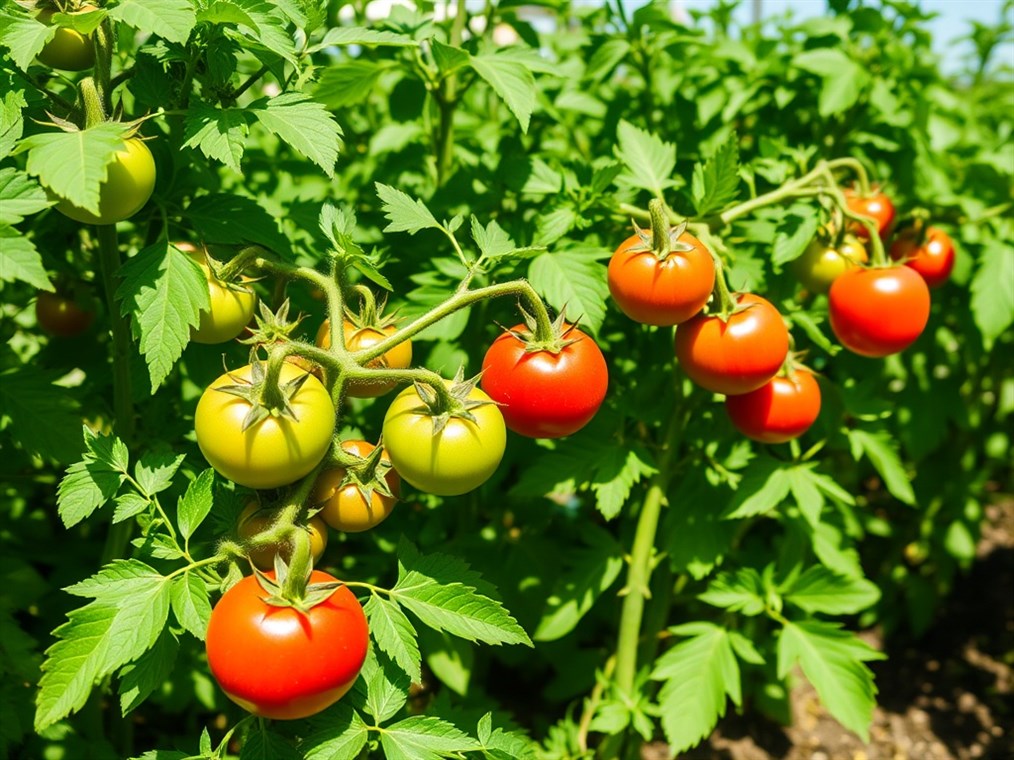How Long Does It Really Take for Tomatoes to Turn Red? Let’s Get Real.
Okay, so you’ve got tomato plants. Awesome! There’s nothing quite like the anticipation of that first, perfectly ripe, red tomato, right? But let’s be honest, sometimes it feels like they’re never going to turn. So, how long does this whole process actually take? Well, buckle up, because it’s not always a straightforward answer.
First things first, let’s talk tomato basics. Think of it like a plant’s journey, from tiny seed to juicy fruit. You’ve got germination, early growth, then it’s all about the leaves, followed by flowers (fingers crossed!), pollination (thank you, bees!), then finally little green tomatoes appear. The whole shebang, seed to harvest, usually takes around 90 days. But here’s a little secret: some early bird varieties can give you ripe tomatoes in as little as 45 days! Talk about instant gratification!
Now, for the main event: the ripening timeline. Once your tomato reaches full size (that “mature green” stage), the real waiting game begins. Generally, you’re looking at another 3 to 4 weeks for that green orb to transform into a beautiful, red masterpiece. During this time, it’s like a color-changing magic trick. Green fades to light green, then maybe a hint of yellow or pink, before bam! Red. This is all thanks to pigments called lycopene and carotene, which are basically the paintbrushes behind that gorgeous color. And let’s not forget ethylene, a natural gas that’s like the conductor of this ripening orchestra.
But here’s where things get interesting. A bunch of things can mess with this timeline. It’s not a one-size-fits-all kind of deal.
- Tomato Type Matters: Think of it like dogs, you have big dogs, small dogs, and all kinds of shapes and sizes in between. The same is true for tomatoes. ‘Early Girl’ and cherry tomatoes are the sprinters of the tomato world, ripening way faster than those big, beefy beefsteaks. Bush tomatoes tend to be quicker than vining ones, too.
- Temperature is Key: Tomatoes are Goldilocks when it comes to temperature. They like it just right – between 68°F and 77°F (20-25°C). Too cold (below 60°F) or too hot (above 85°F), and they’ll throw a tantrum and refuse to ripen properly. High heat can actually stop those color pigments from doing their thing, leaving you with yellowish-green or yellowish-orange disappointments.
- Sunlight? Not Too Much: While your plants need sun, the tomatoes themselves don’t need to be sunbathing. Too much direct sun can cause sunscald, which is basically a sunburn for tomatoes, leading to uneven ripening.
- Water and Food: Consistent watering is crucial, but don’t drown them! And go easy on the nitrogen fertilizer. Too much nitrogen is like giving them too much coffee – they’ll focus on growing leaves instead of ripening fruit.
- Healthy Plants, Happy Tomatoes: A stressed or sick plant is going to have a hard time ripening its fruit. Keep your plants healthy and pest-free for best results.
- Ethylene to the Rescue: This natural gas is the ripening trigger. That’s why you can use the old trick of putting tomatoes in a paper bag to speed things up.
Okay, so you want those red tomatoes now? Here’s how to nudge them along:
- Get Pruning: Trim away extra leaves and those little suckers that grow in the crotches of the branches. This directs the plant’s energy where it’s needed most: ripening fruit.
- Fertilize Smart: Switch to a fertilizer that’s lower in nitrogen and higher in phosphorus and potassium. Think of it as giving them the right kind of fuel for the final stretch.
- Temperature Control is Your Friend: If you’re dealing with extreme temperatures, use row covers or shade cloth to protect your plants.
- Pick ‘Em Early (Sort Of): Once you see a blush of color, go ahead and pick those tomatoes. They’ll continue to ripen indoors.
- The Paper Bag Trick: Remember that ethylene gas? Place your mature green tomatoes in a paper bag with a banana or apple. These fruits release ethylene, speeding up the ripening process. Store the bag in a warm, dark place.
- Less Water, More Action: Once your tomatoes are full size, ease up on the watering. This signals the plant to focus on ripening.
- Give ‘Em a Jolt: This one’s a bit out there, but some gardeners swear by it. Gently pull at the base of the plant to slightly disturb the roots. The “shock” supposedly tells the plant to hurry up and ripen its fruit.
And hey, if you have a bunch of green tomatoes at the end of the season, don’t despair! They can absolutely ripen off the vine. Just make sure they’ve reached that “mature green” stage – full size with a slight color change. Store them indoors at a cool room temperature (around 60-65°F) in a well-ventilated spot. And whatever you do, don’t put them in the fridge! It’ll ruin their flavor and texture. Trust me, I’ve learned that the hard way.
The world of tomato ripening is actually pretty fascinating. Scientists are constantly learning more about the process, like how cellular recycling and cell wall components play a role. They’re even figuring out how to tweak the color and ripening speed by messing with tiny parts inside the plant cells! It’s all pretty mind-blowing, and it could lead to even better tomatoes in the future.
So, there you have it. The journey from green tomato to red delight isn’t always a sprint, but with a little knowledge and patience, you’ll be enjoying those homegrown beauties in no time. Happy growing!

